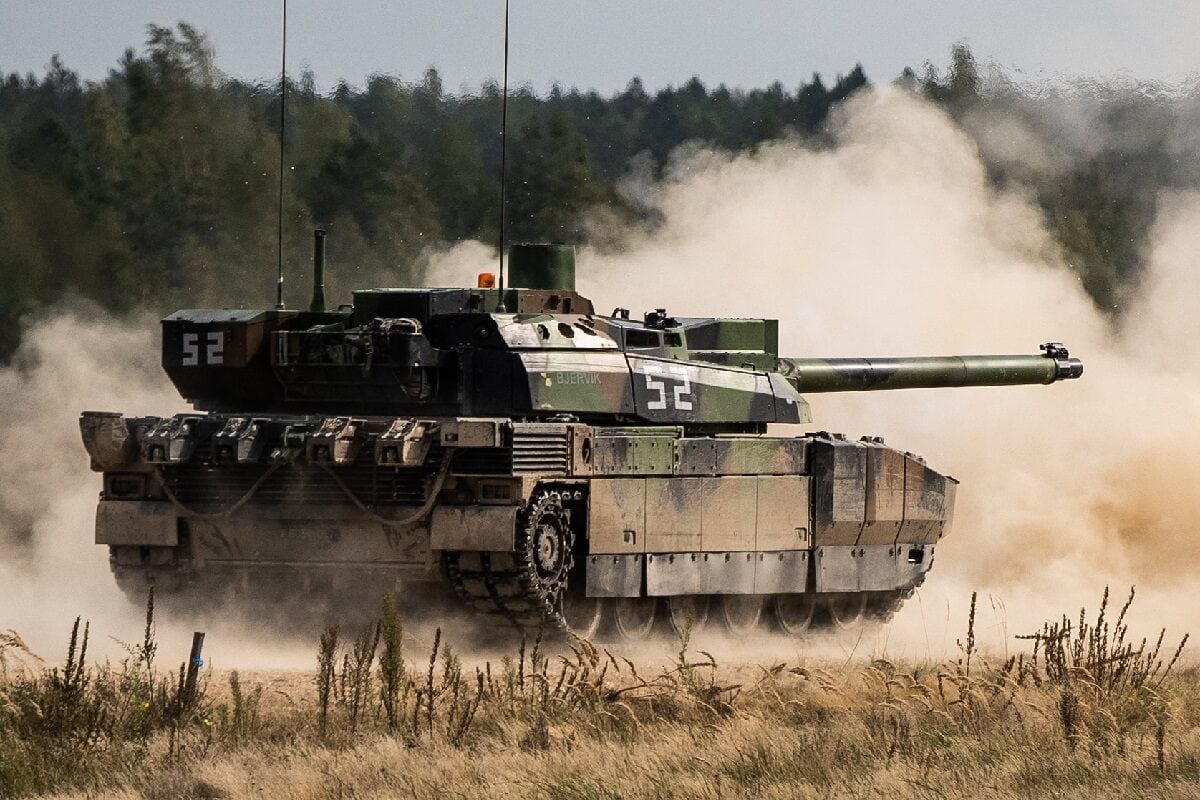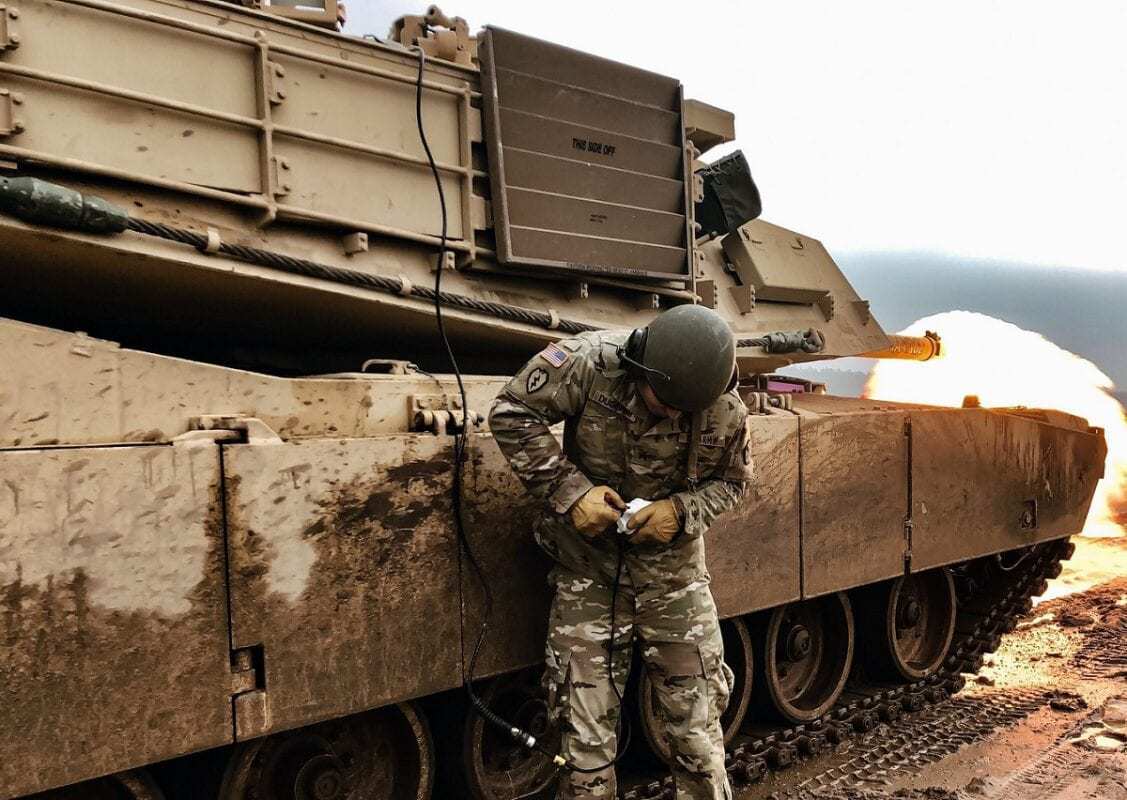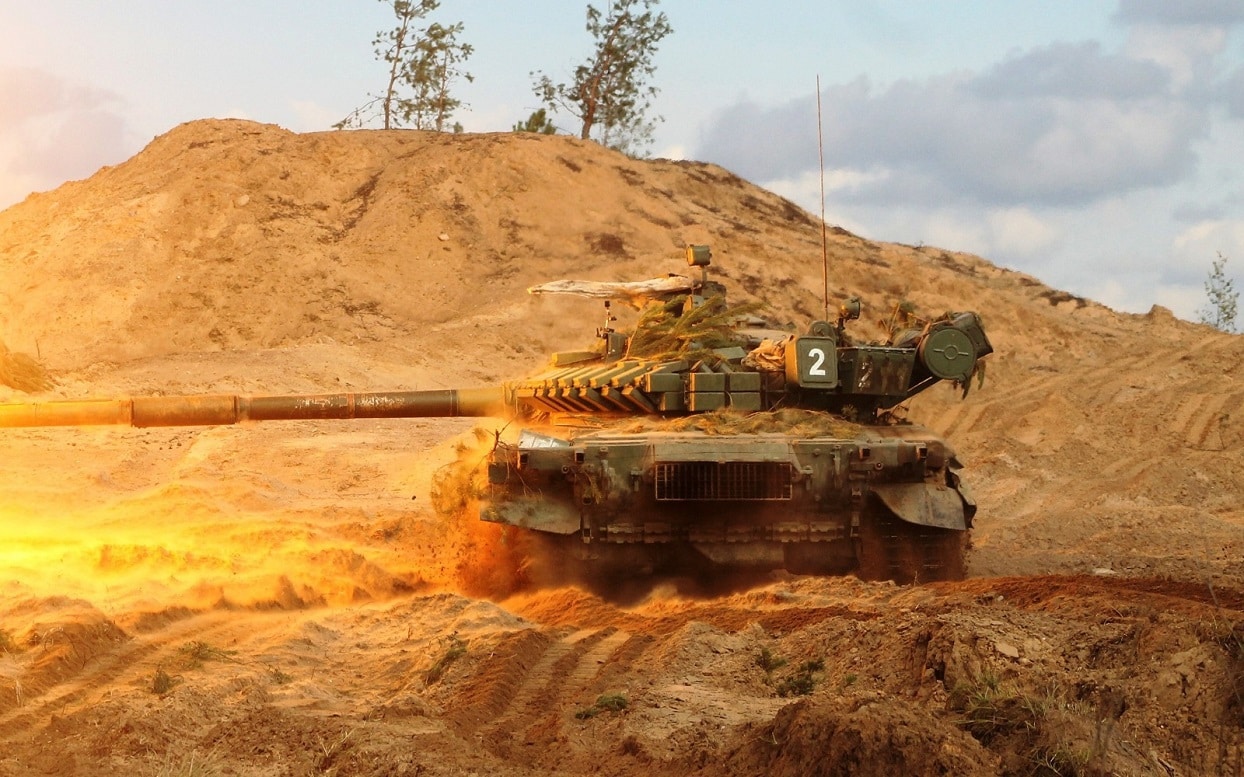Even as US President Joe Biden has prioritized repairing the United States’ relationships with European allies and rebuilding trust, 2021 has been an unsettling year for security on NATO’s eastern borders. The status quo, in which a Russian invasion seemed readily deterrable, has been repeatedly undermined, leaving the region in a more fragile place than at any point since Russia annexed Crimea from Ukraine in 2014.
Ukraine
Every once in a while, Ukraine becomes the hot spot of Eastern Europe, one of the most likely points where a conflict could break out. It was true when Crimea was annexed, and it was true this year when it became apparent that Russia was building up to a potential new invasion of Ukraine just ahead of the December 7 video call between U.S. President Joe Biden and Russian president Vladimir Putin.
Recent U.S. intelligence estimated that about 70,000 Russian troops had moved near the Ukrainian border and were constructing supply lines, including for medical units and fuel, that could provide them long-term support during a sustained military campaign.
During their call, Biden told Putin that Washington was prepared to hit Russia with even stronger economic sanctions than were issued after the annexation of Crimea. Likewise, national security adviser Jake Sullivan told reporters that the White House was willing to assist Ukraine in fortifying its defenses, while not specifying what that support might include.
In Sullivan’s words: “We would provide additional defensive materiel to the Ukrainians above and beyond that which we are already providing, and we would fortify our NATO allies on the eastern flank with additional capabilities in response to such an escalation.”
Ukraine has sought NATO membership in the past and has been denied it based on the degree of corruption in its national government. However, Ukraine’s own geographic vulnerability to a Russian invasion is most likely what is preventing it from achieving NATO membership. If it were invaded by Russia, the obligation for the U.S. and its allies to send troops for Ukraine’s defense would be automatically triggered. This concern already exists in the event of a conventional Russian invasion of one of the three Baltic States, all of whom are members of NATO.

A French Leclerc battle tank fires its main gun during Exercise Furious Hawk in Ādaži, Latvia. The French tanks are deployed to NATO’s enhanced Forward Presence Battlegroup in Estonia.
NATO’s problems in the east are not limited to Ukraine’s border with Russia. To its south, Turkey is drifting further and further from the NATO orbit. It is growing closer to Russia and to Vladimir Putin, specifically, due to Turkish president Recep Tayyip Erdogan’s affinity for the Russian president. Its 2017 purchase of Russian S-400 missiles made it a security threat to the alliance, and its harassment of NATO members such as France and Greece in recent years has made it a problematic friend, at best.
Belarus
However, the biggest sea change in Europe took place in Belarus, a country that has languished as an impoverished state ruled by an authoritarian president, Aleksander Lukashenko, since it broke from the Soviet Union. In 2020, reeling from massive nationwide protests attempting to force his resignation and facing a legitimate challenge for the presidency from a candidate who earned the majority of public support, Lukashenko refused to leave office. The opposition candidate, Sviatlana Tsikhanouskaya, was ultimately driven into exile in Lithuania.
Since he was nearly ousted from power, Lukashenko has received considerable political and economic support from Moscow and Russian president Vladimir Putin. Lukashenko once attempted to distance Belarus from Russian influence, resisting pressure to establish an economic union with Moscow, but has since swung in the opposite direction.
At this point, it is not an exaggeration to say that Belarus has been absorbed into Russia in an all but an official sense—though Putin and Lukashenko conducted a joint press conference announcing an agreement to begin the process of formally integrating the two countries’ economies. At the same conference, Putin confirmed that a possible political union was on his agenda for the future.
The Polish Border
Belarus has also begun to present a continuous threat to Poland along the border they share. The presence of Russian troops in Belarus, particularly near the border, quickly raised the alarm in Western Europe and the United States as a potential inflection point for future conflict to break out. Russian and Belarusian forces were also observed undertaking the ZAPAD (“WEST” in Russian) joint military exercises this year, which simulate a conflict with NATO.
Unlike in previous runs of the exercises, Russia did not withdraw all its forces when ZAPAD came to an end. In fact, Russian surface-to-air missiles still remain deployed within walking distance of Belarus’ border with Poland.

Battle Group Poland Fires an M1 Abrams Remotely
Lukashenko’s government has been diverting migrants from the Middle East and Africa toward Poland, which has struggled to deal with the influx, resulting in what the European Union labeled a “hybrid war.” A humanitarian crisis on the Polish-Belarusian border puts a strain on Polish manpower and other resources has the effect of disrupting Polish defensive preparations and distracting the Warsaw government.
At this point, it is uncertain what 2022 might have in store for Eastern Europe’s geopolitical balance, but few observers in the region and from the West are expressing optimism about the future.
Sarah White, M.A., is Senior Research Analyst and Editor at the Lexington Institute. Prior to joining Lexington, Sarah held internships at the Albright Stonebridge Group and the Woodrow Wilson International Center for Scholars. She earned an M.A. in Latin American Studies in 2019 from Georgetown University’s Walsh School of Foreign Service, and a B.A. in political science and Spanish from Wake Forest University in 2017. Sarah is fluent in Spanish, proficient in Portuguese, and conversational in French. She is a native of McLean, Virginia.

